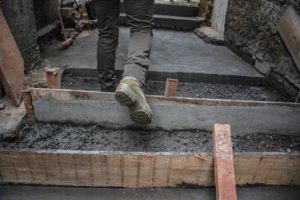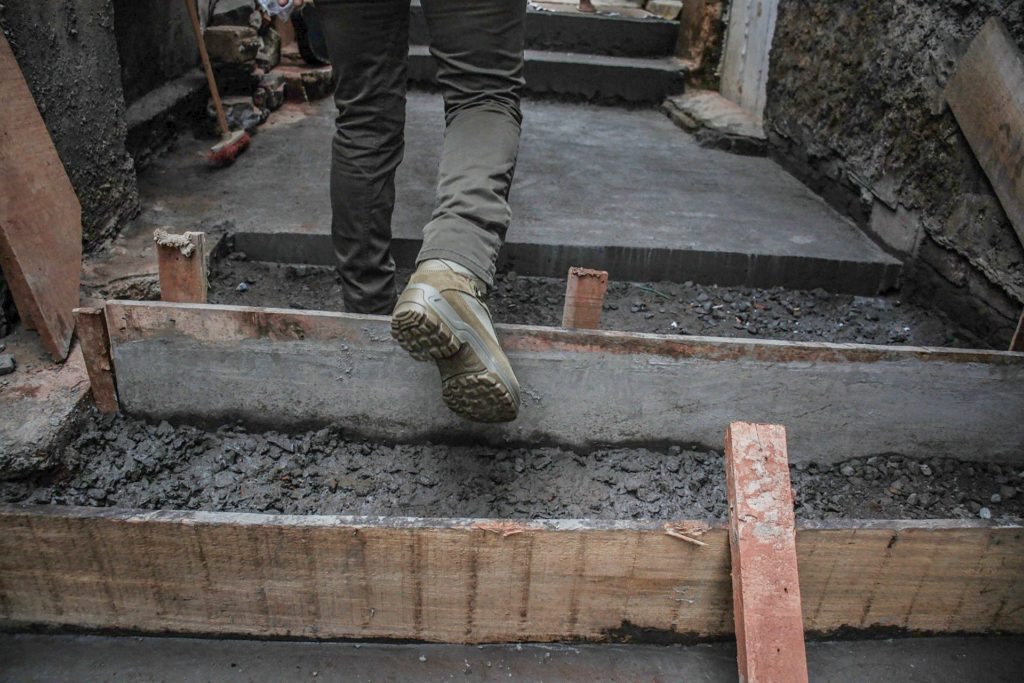As someone who works on concrete, you know firsthand the toll it can take on your feet, legs, and back. Standing for long periods of time on a hard, unforgiving surface can lead to discomfort, fatigue, and even serious injuries. That’s why it’s so important to choose the right footwear for working on concrete.
Finding the best boots for Concrete Workers
But with so many different types of boots available, how do you know which ones are the best for working on concrete? Here are some key questions to consider when choosing the right boots for working on concrete:
What type of work will you be doing? Different types of work may require different features in a boot. For example, if you will be working in wet or slippery conditions, you will want a boot with good slip resistance. If you will be working with heavy machinery or equipment, you may want a boot with steel toes for added protection.
What are the conditions of your work environment? You should consider the temperature, humidity, and other environmental factors that may affect your comfort and safety while working. For example, if you will be working in hot or humid conditions, you may want a boot with good ventilation to keep your feet cool.
What is your budget? Boots can range in price from around a hundred dollars to several hundred dollars. It’s important to consider your budget when choosing a boot, as you want to make sure you are getting the best value for your money.
What is your personal fit preference? It’s important to find a boot that fits well and is comfortable to wear for long periods of time. Consider your foot size and shape, as well as any special fit needs (such as wide or narrow feet).
What are the durability and longevity of the boot? You will want a boot that can withstand the rigors of your job and last for a long time. Look for boots that are made with high-quality materials and have good durability ratings.
Why choosing the right boots is important
If you don’t have the proper footwear for working on concrete, you may experience a variety of problems. Your feet may become tired and sore, leading to discomfort and possibly even injuries like plantar fasciitis. You may also be at increased risk of slipping and falling, which can result in serious injuries.
Investing in the proper footwear for working on concrete can make a big difference in your comfort and safety. A good pair of boots will provide the support and protection you need, helping to prevent fatigue and injuries. They may also have features like slip resistance and steel toes that can help to keep you safe on the job.
Of course, it’s important to remember that no matter how good your boots are, they won’t do you much good if they don’t fit properly. Be sure to try on several pairs of boots to find the one that fits you best, and make sure to break them in before wearing them for long periods of time.
Choosing the right boots for working on concrete is crucial for your comfort and safety on the job. By considering factors like the type of work you’ll be doing, the conditions of your work environment, your budget, and your personal fit preferences, you can find a pair of boots that will help you stay comfortable and safe while working on concrete. Investing in the proper footwear is well worth the effort, as it can help to prevent fatigue, injuries, and other problems that can arise from working on this demanding surface.
Choosing from the different types of work boots
There are several types of workboots that are designed specifically for working on concrete, each with its own unique features and benefits. Here are some common types of workboots and the differences between them:
Steel-toed workboots: These boots have steel reinforcement in the toe area to protect your feet from falling objects or heavy machinery. They are ideal for jobs where there is a risk of toe injuries.
Slip-resistant workboots: These boots have special tread patterns or materials on the soles to help prevent slips and falls on wet or slippery surfaces. They are ideal for jobs where there is a risk of slipping, such as in wet or oily environments.
Waterproof workboots: These boots are designed to keep your feet dry in wet conditions. They may have waterproof materials or coatings to help keep water out, and may also have good ventilation to help keep your feet dry and comfortable.
Insulated workboots: These boots are designed to keep your feet warm in cold conditions. They may have insulation materials or liners to help retain heat and may also have waterproof features to keep your feet dry.
Athletic workboots: These boots are designed to be lightweight and comfortable, with features like padded collars and cushioned insoles. They may also have good ventilation to help keep your feet cool. They are ideal for jobs that require a lot of walking or standing.
Safety boots: These boots are designed to meet specific safety standards and regulations. They may have features like steel toes, slip resistance, and insulation, and may be required for certain types of jobs.
Ultimately, the best type of workboot for working on concrete will depend on your specific needs and the conditions of your work environment. Consider factors like the type of work you’ll be doing, the conditions you’ll be working in, and your personal fit preferences when choosing a workboot.
Extra Tips for Staying Comfortable When Working on Concrete Floors
Here are some tips to help you avoid discomfort when standing on concrete floors:
- Wear supportive shoes or boots: Choose footwear that provides good arch support and cushioning to help reduce the impact on your feet and legs.
- Take breaks: Don’t stand in one place for too long. Take regular breaks to sit down, stretch, or walk around to give your feet and legs a rest.
- Use a mat or pad: Stand on a mat or pad to provide some cushioning and reduce the impact on your feet and legs.
- Stretch: Take a few minutes to stretch your feet, legs, and back to help prevent muscle strain and fatigue.
- Wear comfortable clothes: Choose clothes that are loose and comfortable, rather than tight or restrictive.
- Wear moisture-wicking socks: Wear socks that are designed to wick moisture away from your skin to help keep your feet dry and comfortable.
- Keep your feet dry: If you are working in wet or humid conditions, take steps to keep your feet dry by wearing waterproof boots or using foot powder.
- Stay hydrated: Drink plenty of water to help prevent dehydration, which can contribute to fatigue and discomfort.
- Use insoles or inserts: If you are experiencing discomfort, try using insoles or inserts to add extra cushioning and support to your footwear.
Tips for staying comfortable when you stand all day
By following these tips, you can help reduce discomfort and fatigue when standing on concrete floors. Remember to listen to your body and take breaks when you need them, and consider investing in footwear and other gear that can help reduce the impact on your feet and legs.
